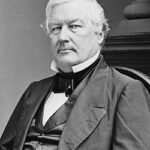The Visionary Decision
President Millard Fillmore’s advocacy for the transcontinental railroad represented one of his most forward-thinking presidential decisions. In 1851, he strongly endorsed federal support for a coast-to-coast railway system. This position demonstrated remarkable foresight during an era when many questioned government involvement in infrastructure projects.
Economic Foundation for Growth
Fillmore recognized that a transcontinental railroad would create unprecedented economic opportunities 📊. The project would connect California’s booming Gold Rush economy with eastern manufacturing centers. He understood that federal investment in this massive undertaking would stimulate job creation across multiple industries. The railroad would reduce shipping costs and travel time dramatically.
National Unity Through Infrastructure
Beyond economic benefits, Fillmore viewed the railroad as essential for national cohesion 💰. The project would physically link distant territories to the established states. This connection would strengthen federal authority in western regions. His support helped establish the principle that major infrastructure projects required federal coordination and funding.
Impact:
Establishing Federal Infrastructure Policy
Fillmore’s transcontinental railroad advocacy created lasting precedents for federal infrastructure investment 🌍. His administration’s support helped legitimize government funding for large-scale transportation projects. This principle would later influence federal highway systems and modern infrastructure initiatives. The decision established infrastructure as a national security and economic necessity.
Accelerating Westward Expansion
The eventual completion of the transcontinental railroad in 1869 vindicated Fillmore’s early vision 📊. The railway transformed America into a truly continental power within decades. Western territories gained reliable connections to eastern markets and population centers. Agricultural and mining products could reach distant consumers efficiently. The railroad facilitated rapid settlement of western territories.
Long-term Economic Transformation
Fillmore’s railroad support contributed to America’s emergence as an industrial powerhouse 💰. The completed railway system enabled efficient movement of raw materials and finished goods. Manufacturing centers could access western resources previously difficult to transport. The railroad created thousands of permanent jobs in construction, operation, and maintenance. This infrastructure investment generated economic returns that far exceeded initial costs.
